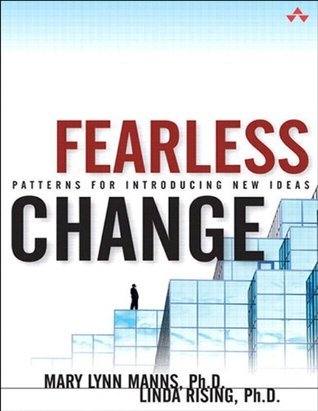What do you think?
Rate this book


“All that have ever tried to impose change in their organization will immediately recognize and truly value the in-depth knowledge and experience captured in this book. It contains a collection of eye-openers that is a treasure chest for pioneers of new organizational ideas, A fantastic toolbox for use in future missions!”
—Lise B. Hvatum, product development manager, Schlumberger
“If you have need of changing your organization, and especially of introducing new techniques, then you want to understand what is in this book. It will help you avoid common pitfalls that doom many such projects and will show you a clear path to success. The techniques are derived from the experience of many individuals and organizations. Many are also fun to apply. This stuff is really cool—and really hot.”
—Joseph Bergin, professor of computer science, Pace University, New York
“If change is the only guarantee in life, why is it so hard to do? As this book points out, people are not so much resistant to change itself as they are to being changed. Mary Lynn and Linda have successfully used the pattern form to capture and present the recurring lessons of successful change efforts and have placed a powerful knowledge resource in the hands of their readers.”
—Alan O'Callaghan, researcher, Software Technology Research Laboratory, De Montfort University, United Kingdom
“The most difficult part of absorbing patterns, or any technology, into an organization is overcoming the people issues. The patterns in this book are the documentation of having gone through that experience, giving those that dare push the envelope a head start at success.”—David E. DeLano, IBM Pervasive Computing
“If you have ever wondered how you could possibly foster any cultural changes in your organization, in this book you will find a lot of concrete advice for doing so. I recommend that everyone read this book who has a vast interest in keeping his or her organization flexible and open for cultural change.”
—Jutta Eckstein, Independent Consultant, Objects In Action Author of Agile Software Development in the Large
Change. It's brutally tough to initiate, even harder to sustain. It takes too long. People resist it.
But without it, organizations lose their competitive edge. Fortunately, you can succeed at making change. In Fearless Change, Mary Lynn Manns and Linda Rising illuminate 48 proven techniques, or patterns, for implementing change in organizations or teams of all sizes, and show you exactly how to use them successfully.
Find out how to
Understand the forces in your organization that drive and retard change Plant the seeds of change Drive participation and buy-in, from start to finish Choose an "official skeptic" to sharpen your thinking Make your changes appear less threatening Find the right timing and the best teaching moments Sustain your momentum Overcome adversity and celebrate successInspired by the "pattern languages" that are transforming fields from software to architecture, the authors illuminate patterns for every stage of the change process: knowledge, persuasion, decision, implementatio
370 pages, Kindle Edition
First published September 4, 2004